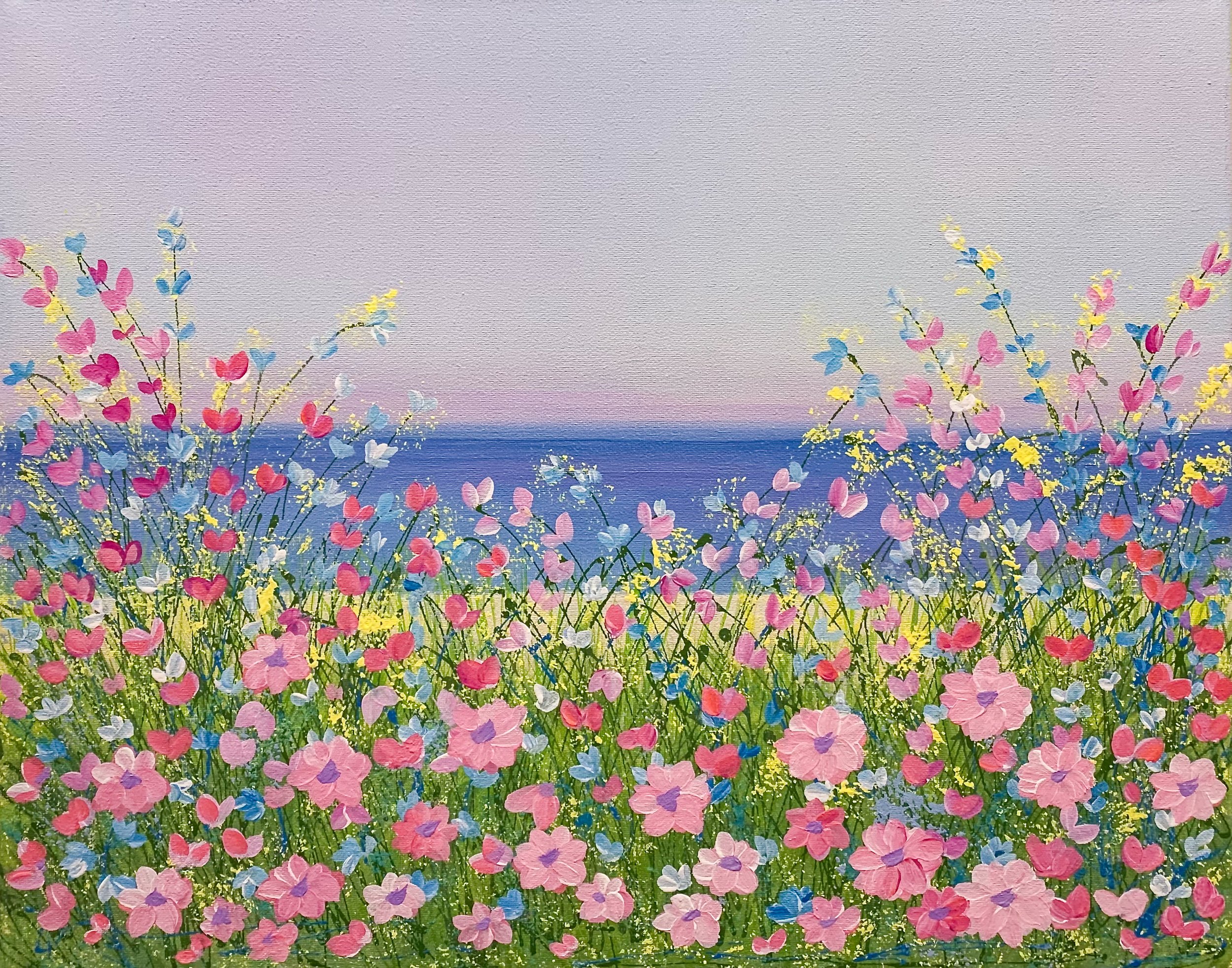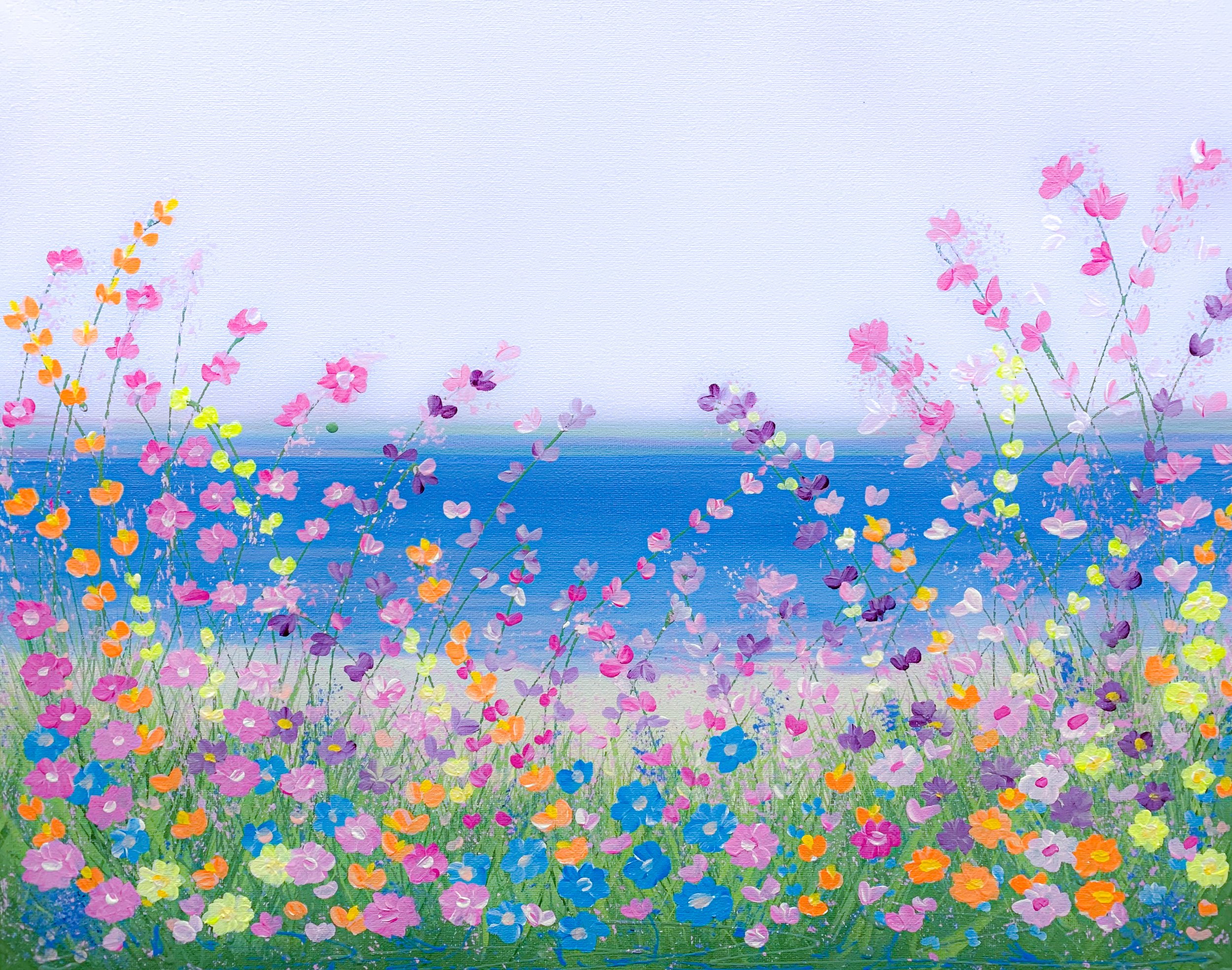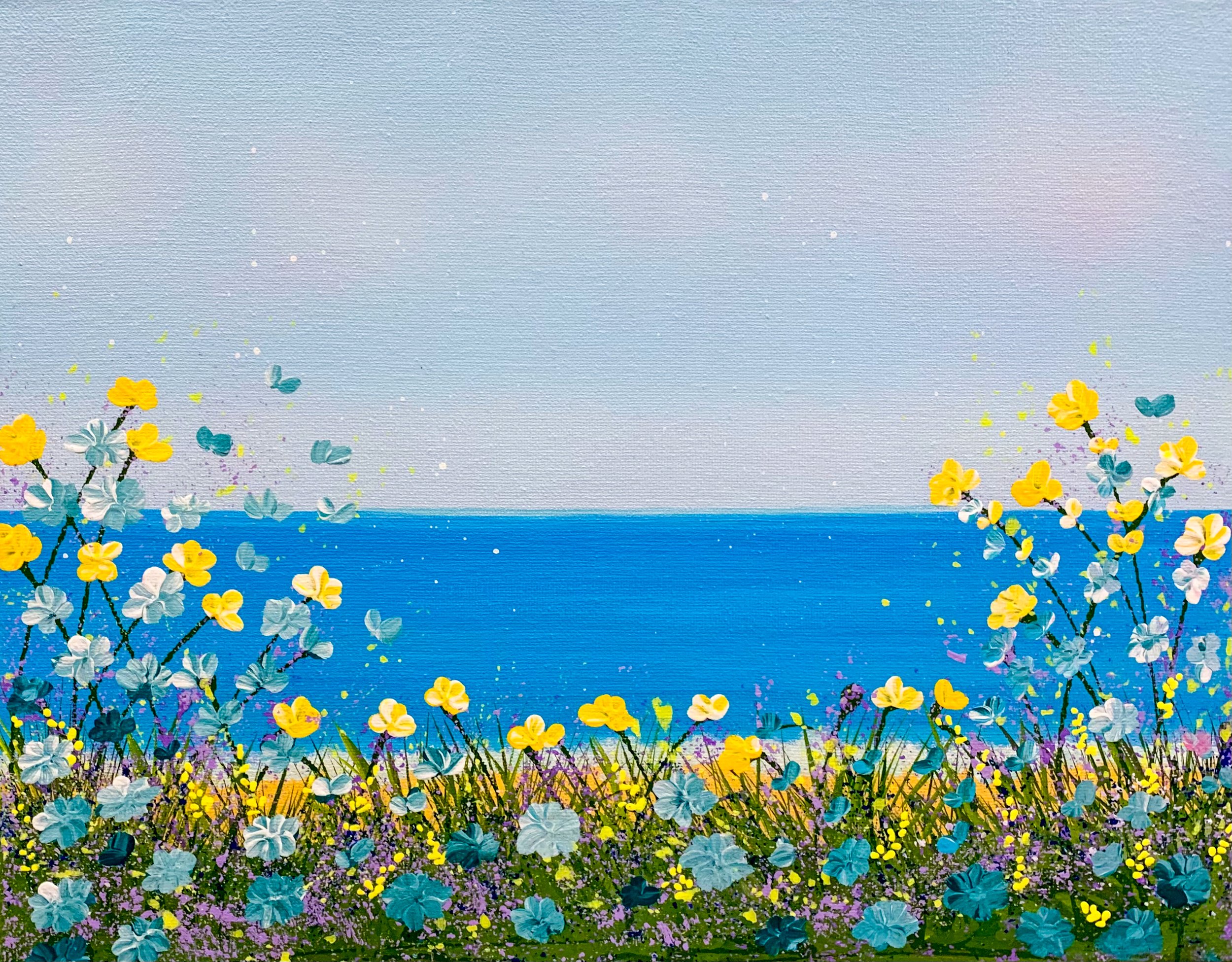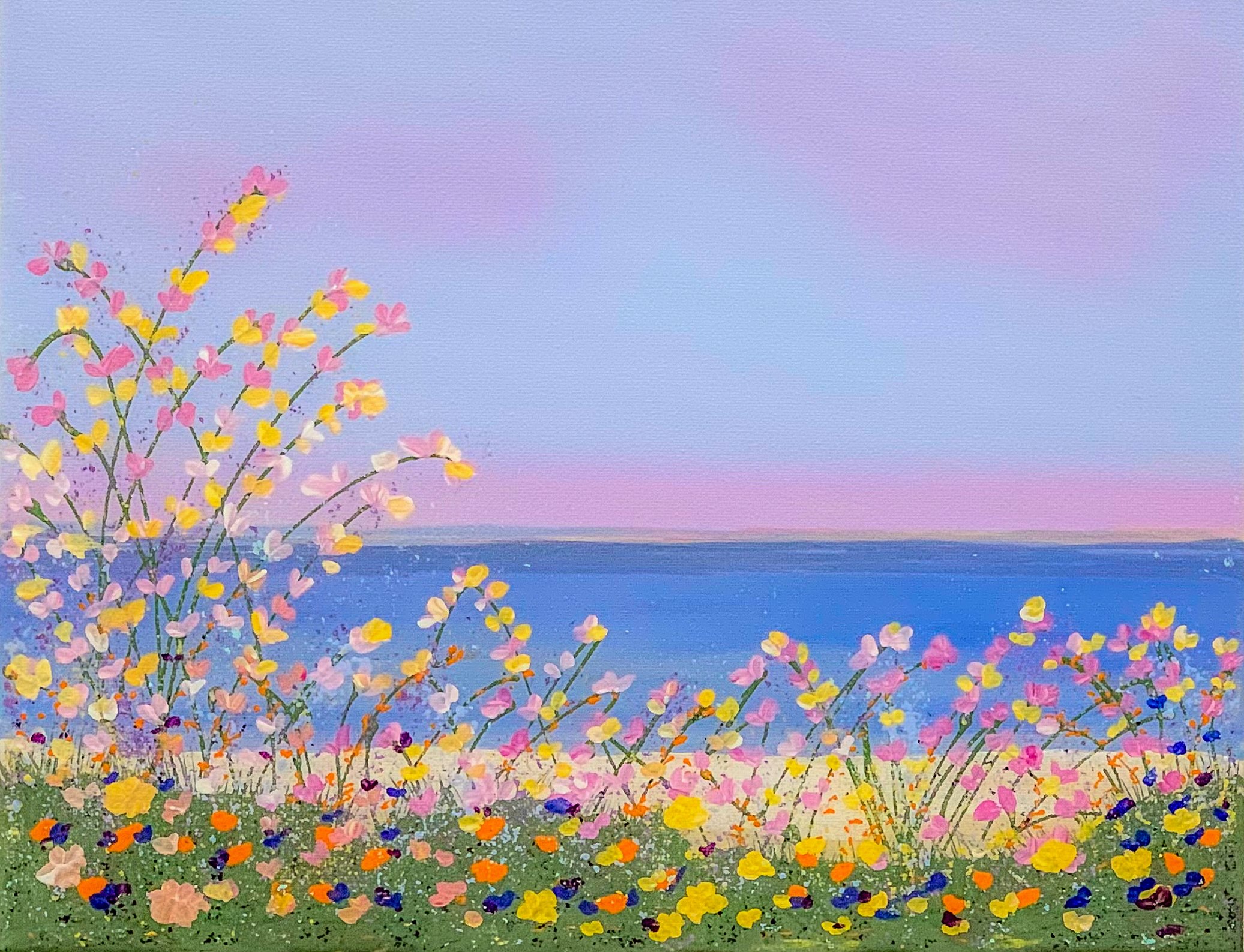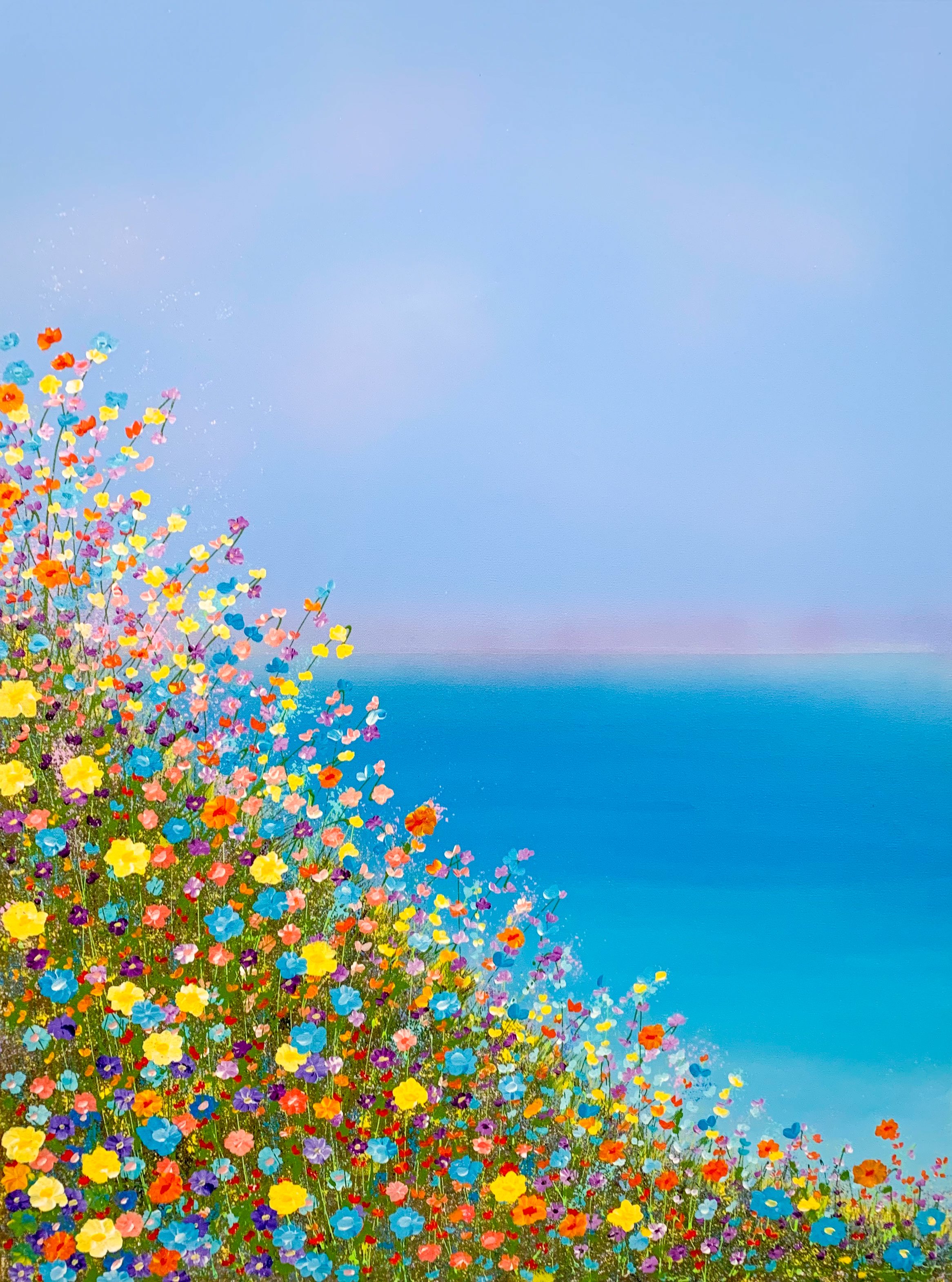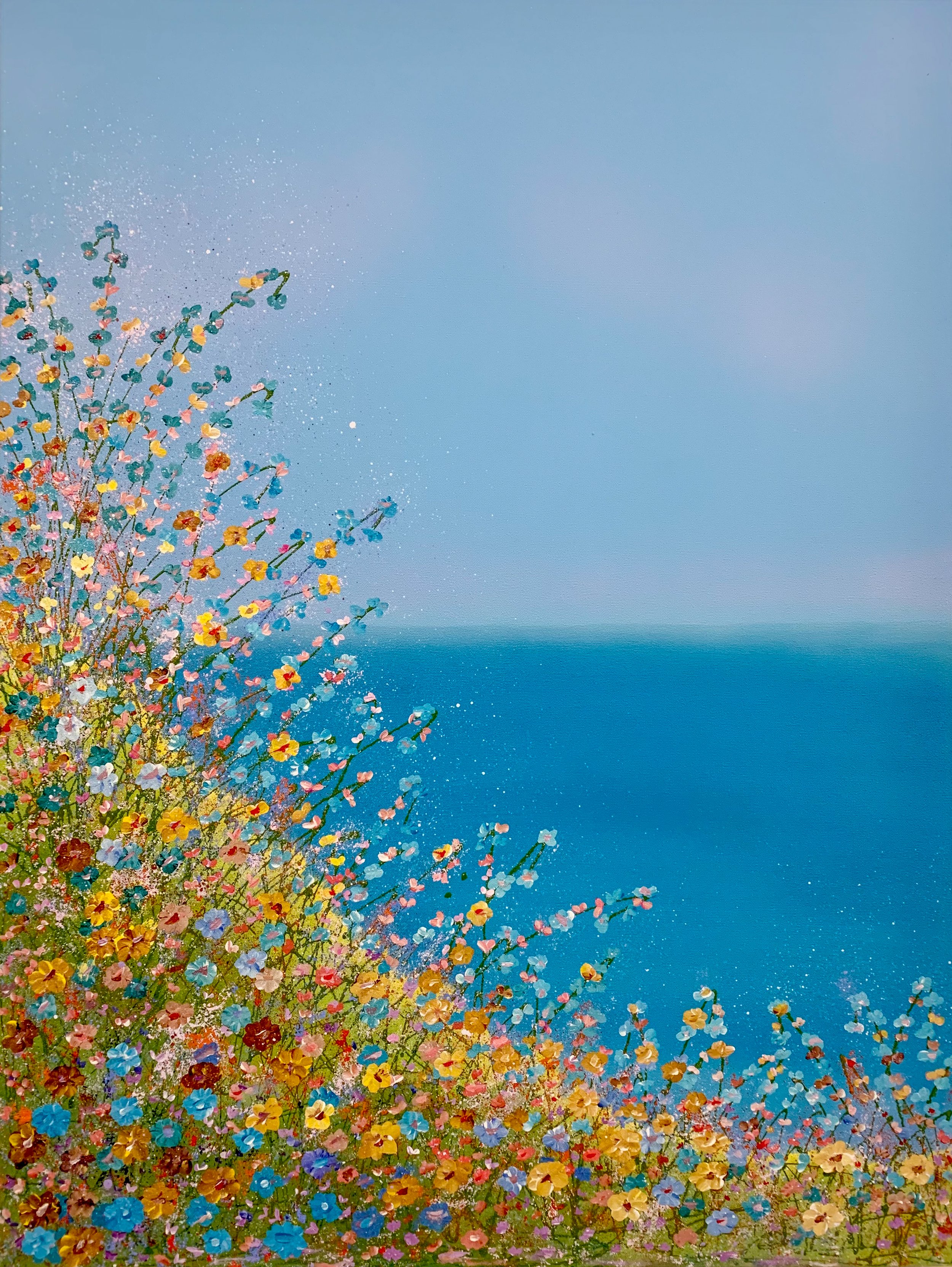Why Did I Become Evidence-Based Design Certified?
A couple of years ago, I was on a very popular—and seemingly legitimate—New York City art website that was promoting art for health and healing.
Get this—misshapen and horrifically disfigured images; spread open naked human legs and rolls of unhealthy body fat; abstracts of daggers and dripping blood—all amazing works in their categories—just nothing I would consider appropriate for the elimination of stress or the recovery of human health.
This set me on a course for knowledge. I wanted to discover if I could actually learn to design/create with your health and healing in mind. I found The Center For Health Design with its excellent EDAC (Evidence-based Design) courses and certification. Imagine thousands of doctors, hospital administrators, health facility architects, hospital room designers, and many more professionals worldwide basing their creative/artistic decisions and designs on actual medical studies.
Instead of some untrained art critic or consultant setting the standards for art, health, and healing, I now had real medical professionals to learn from and follow. The EDAC exam was the most challenging test I ever took (and I’m a university graduate with high grades), but the knowledge I gained—which I now incorporate into my designs—was absolutely worth all the hard work.
It’s amazing how many people who buy my evidence-based designs tell me how this “evidence-based” art actually shifts their moods and creates positive and uplifting feelings/states of mind.
Here are four examples of what should never be promoted as evidence-based art for health and healing. Two of the pieces sold within minutes to a collector. They had merit, just not as evidence-based design art.
The first painting is titled Anguish and is part of a series I created about child abuse. This painting artistically reflects the mental and emotional suffering that children experience when they are not nurtured in healthy ways.
The second work, Killed Opportunities, shows how barren and tragic a child’s life becomes as opportunities for health and happiness are killed.
The third painting, Death By Power, reflects negative power winning. The face of a hideous creature looking at the viewer (top center) and a hand with the middle finger raised up (lower center) are perceptible.
In February 2025, I sold The Tempest, the fourth painting, again to a collector.
All four paintings have merit as works of abstract art. The art itself, however, does not de-stress or promote health and healing. In fact, it does the opposite.
Can you imagine the added stress and trauma of looking at any one of these paintings while recovering in a hospital bed? Before training to become evidence-based design certified, I wondered why influential people in the art world were calling paintings like this art for health and art for healing. It just didn’t make any sense to me.
Here are more beautiful paintings that would not be considered 100% appropriate evidence-based designs. Some I sold, some are for sale through a Paris, France international gallery, my website, Galleri Soho in Sweden, and more.
When I create evidence-based design art, I use design suggestions and strategies based on credible scientific and medical research. I get my information from a variety of sources, but I enjoy and value the trainings (which are required for EDAC recertification) at the Center For Health Design and their journals and repository information.
There’s a difference between pretty art that makes us feel happy and art that triggers our brains to feel happy based on medical and scientific research. Evidence-based design is that kind of art.
Is Evidence-Based Design Totally New?
Is Evidence-Design Totally New?
If you asked the 6th BCE Greeks of Epidaurus, they might take you to one of the most celebrated healing centers of the classical world—the Asclepieion hospital. In their hospital, patient rooms faced eastward. Why? It is believed the rooms were intuitively designed and placed toward the sun to promote healing.
Many centuries later, many movements from different countries came together in the 1970s to create a new field called evidence-based design.
Who are the people whose forces created this new discipline? Doctors, Scientists, Architects, Interior Designers, Psychologists, Sociologists, Anthropologists, and many others.
The Healing Window by Dorothea Sandra, EDAC, 36”x48”
This artist’s journey into Evidence-Based Design
Photo from the back of McLaren Northern Hospital, Petoskey, Michigan
I am known by many titles in the art world: Artist Of Happiness; a modernizer of traditional woodland compositions; a Great Lakes artist; a 21st-century experimental artist; creator of the evidence-based design collection, Symphonies Of Love; creator of the Smart City Art Collection; and more.
At the beginning of my evidence-based design artistic journey, I chose to create a painting depicting a view from a hospital room. The background of The Healing Window features Little Traverse Bay, as seen from the back parking lot of McLaren Northern Hospital in Petoskey, Michigan.
While composing this painting, I imagined myself in one of the patient rooms at McLaren Northern, looking out the window.
I also imagined myself in a patient room or in a healthcare lobby or a waiting area.




Artists always have lots of choices to make. Early in my evidence-based design floral art career, I chose creating happiness (triggering dopamine) over painting realism. My reason? I figured I would have more power to create happiness if I had more artistic power of the flowers. Not only did realism limit my ability to create happiness (dopamine), but according to medical and scientific research, traditional still-life wasn’t an art category most favored within evidence-based design.
So, is evidence-based design totally new? Yes and no. The flowers in this artwork are modern, cheerful, uplifting, and based on current evidence-based design best practices. However, I also wanted to pay homage to the accomplishments of those who came before us by incorporating elements that, especially in the design texture of the vases, evoke a rough, ancient Greek Asclepieion aesthetic.
Inside Evidence-Based Design Art
I do not have the expertise of a neuroscientist or medical researcher or practitioner, but I do LOVE to study their evidence-based design results and find ways to experiment with them in art.
In Symphonies Of Love Number 11 my goal was to create a beautiful work of art without much impact.
To create the beauty, I chose the shape of a heart because I wanted a very clear, strong message that instantly communicated, “You are loved.” I find too much evidence-based design art today a little too wispy and without form. Sometimes people, and especially children, need a clear, up-in-your-face message, especially one of love.
Can you imagine a child in a patient bed or waiting area? Fear, worry, doubt can be big factors within a healthcare setting. I think an image of a heart outperforms a typical biophilic design when it comes to encouraging feelings of love, safety, and care.
Also for this painting, I chose to blend the inner area of each flower mostly with each flower’s petal color. What this does is create beauty without impact/stress, something super valuable within many healthcare environment locations. Some people are at the outer limits of their emotions in this setting, so creating beautiful art that does not stress is often welcome and greatly appreciated.
Take a look inside my book, 100 Days Of Happy Happy Art, Evidence-Based Design.
There’s even a chapter on neuroscience and art.
Inside Evidence-Based Design Art
If you walked past this painting in a healthcare hallway, would your brain receive a message of love without being overly impacted or stressed by the art?
I do not have the expertise of a neuroscientist or medical researcher or practitioner, but I do LOVE to study their evidence-based design results and find ways to experiment with them in art.
Symphonies Of Love Number 12 by Dorothea Sandra, EDAC
This painting was strategically and deliberately designed using evidence-based design principles and guidelines.
My first goal for this painting was to create a soothing, stress-free background. A large body of research is consistent with the proposition that humans are hard-wired to appreciate and benefit from exposure to nature. I chose the color green for the background because green gardens and parklike settings are acceptable in evidence-based design. I could have added some dabs or splatters to the background, but I decided a super smooth, flat background would create beauty without impact or stress.
My next goal was to decide on a composition. I chose the shape of a heart because I wanted to very clearly and very powerfully create a message that said, “You are loved.” I find too much evidence-based design art today wispy and without form. I think those designs are truly wonderful and quite celebratory of nature, but sometimes humans—especially children—need a clear, up-in-your-face message, especially of love.
Can you imagine a child in this patient bed? I think an image of a heart outperforms a typical biophilic design when it comes to encouraging feelings of love, safety, and care.
My third goal for this painting was to add some fine art flair. Nationally and internationally, people have begun to recognize my signature style of making flowers and they like them. As I am forming the flowers, I use a variety of art techniques to build in and create feelings of happiness and joy.
Keeping with my evidence-based design goal of beauty without impact, I very minimally added a pistil tip to each flower.
If you walked past this painting in a healthcare hallway, would your brain receive a message of love without being impacted or stressed by the art?
Anatomy Of An Art Sale
One thing I do as an online art business owner is take responsibility for giving clients a super easy, stress-free buying experience.
My evidence-based design art business is not without its challenges. I live in a clean, safe, nature-filled part of Northern Michigan. It’s a fabulous place to create evidence-based design art, but it’s SUPER REMOTE.
I sell online at https://dorotheasandraart.com and https://singulart.com/en/artist/dorothea-sandra-36937 and I’m galleries in the U.S., but I also like to sell locally. I’m fortunate that about 40 miles away there’s a town called Alpena, Michigan. I really enjoy Alpena and call it my “authentic” arts town because it has not yet become too commercialized. It’s busy with so many downtown festivals and so many summertime visitors from all over the world. In 2024, Viking Cruise Ships on their Great Lakes Tours will stop 26 times in Alpena’s harbor.
Recently, at the Art In The Loft gallery in downtown Alpena, I sold a 6’x9’ painting called Wildflower Wonderland.
A cruise ship visitor from Kansas City, Missouri fell in love with this evidence-based design work of art. She really wanted to buy it but had no idea how to purchase it (while on a cruise) and then get it up on the wall in her home. The staff at Art In The Loft told her I shipped internationally and nationally and gave her my art studio number. When she called, I assured her I would take her through the sale step-by-step.
(Image source: Alpena News)
After she made the purchase, the first thing I did was have the painting taken off the gallery wall, wrapped back up, and transported back to my studio. In the studio, I then examined the painting and rewrapped it in acid-free glassine paper (which protects against moisture, air, and grease).
I gave the painting additional protection by wrapping it in bubble wrap and had a shipping crate prepared.
Another Dorothea Sandra work of art ready for UPS shipping pick up.
While this was going on, I got on the phone and called framing shops in Kansas City, Missouri to arrange for the painting to be stretched and attached to a wooden frame.
Why didn’t I stretch and frame the painting here in Michigan and then ship it to Missouri? If I had tried to ship a 6’x9’ framed painting, the cost would have been too expensive.
Finding the right stretching/frame shop for a client is one of the trickiest parts of the sale.
The first place I called—a well-known art chain store in Kansas City—wouldn’t stretch such a large painting. The second place I called—a framing store with corporate clients—at first said stretching a 6’x9’ wouldn’t be a problem and would only costs a couple hundred dollars, which is a good price for a stretch. The second time I called to confirm the sale, the manager told me he’d get back to me in 10 minutes. After waiting, I called him back an hour later and an employee told me he was busy talking to customers. He never did call me back. The third place I called—the Brookside Gallery on 114 W. 63rd Street in Kansas City—was fabulous. They were a tiny bit more expensive, but they could easily trim and stretch a 6’x9’. We decided to ship the painting directly to them, which would save the buyer any to-and-from transport headaches.
When I make arrangements like this for my buyers, I always look for extreme business competence and excellent customer care. The Brookside Gallery also agreed to connect my buyer with their local art transport company/wall installer.
One thing I do as an art business owner is take responsibility for giving clients an easy, stress-free buying experience.
I figure if I am taking the extra time to create evidence-based design art that triggers the brain to produce happiness chemicals, then I should also take the time to create buying experiences that also produce happiness chemicals in the brain.
In the end, my client who bought an evidence-based work of art while on a cruise, will have been taken care of every step of the way.
I told her, until the painting is installed exactly the way she wants it on her wall, we are in this together.
Experimenting With Art And Health
I’m an artist and innovator in the field of art and health, so I like to experiment a lot.
Recently ARTPLACER.com, an art placement company I really enjoy, added patient rooms to their excellent selection of mockup photos. Today my happy evidence-based design art hangs in so many different physical settings, but I have always told people I never considered it a good fit for the inside of a hospital patient’s room.
With ARTPLACER’S new mockup photos, here was my chance to really experiment within the inside of patient rooms, so I did.
When I create evidence-based design art, I think back to when I needed two major surgeries in different parts of my body in less than 30 days. Through this experience I realized there were so many different stages involved—such as the in-hospital pre-operation stage, the in-hospital post-operation stage, and the at-home longterm recovery stage. I also realized how my needs were different during each stage.
Right after surgery, while in my patient room, I felt that my entire body had been seriously assaulted and traumatized—and it had. The hospital, the staff, and my two doctors were all excellent, but that’s just what happens when a human body needs major surgical operations.
While inside my patient room, what I needed most was a total relief from any additional stimulation or trauma. Most of my evidence-based art is strategically and deliberately designed to not stress, but it is also designed to stimulate.
The trick—or I should say the skill—as an evidence-based design patient room artist is to create a work of art that is lovely according to the evidence-based design guidelines but is also one that does not cause too much brain stimulation. The art should be lovely without impact.
Placing different pieces of my art in ARTPLACER’S new hospital rooms, I was able to do some experimenting and here are some things I discovered.
Very much to my surprise, some of my florals did very well, even in a darker patient room. They were lovely and uplifting and fit comfortably in this room without creating too much stimulation to the brain.
I was even more surprised to see that even my bolder evidence-based design florals succeeded. They clearly delivered happiness and cheer without causing any stress or trauma.
Here are some of my other evidence-based design paintings that I thought might just work inside a patient room. I have always felt that my ideal hospital patient room should have carefully selected works of real art on the wall. Bland, boring, stereotypical designs actually frighten me. It’s as if this art makes a kind of heart monitor flatline sound. For me, art is hyper visual but it’s also always full of music and sound.
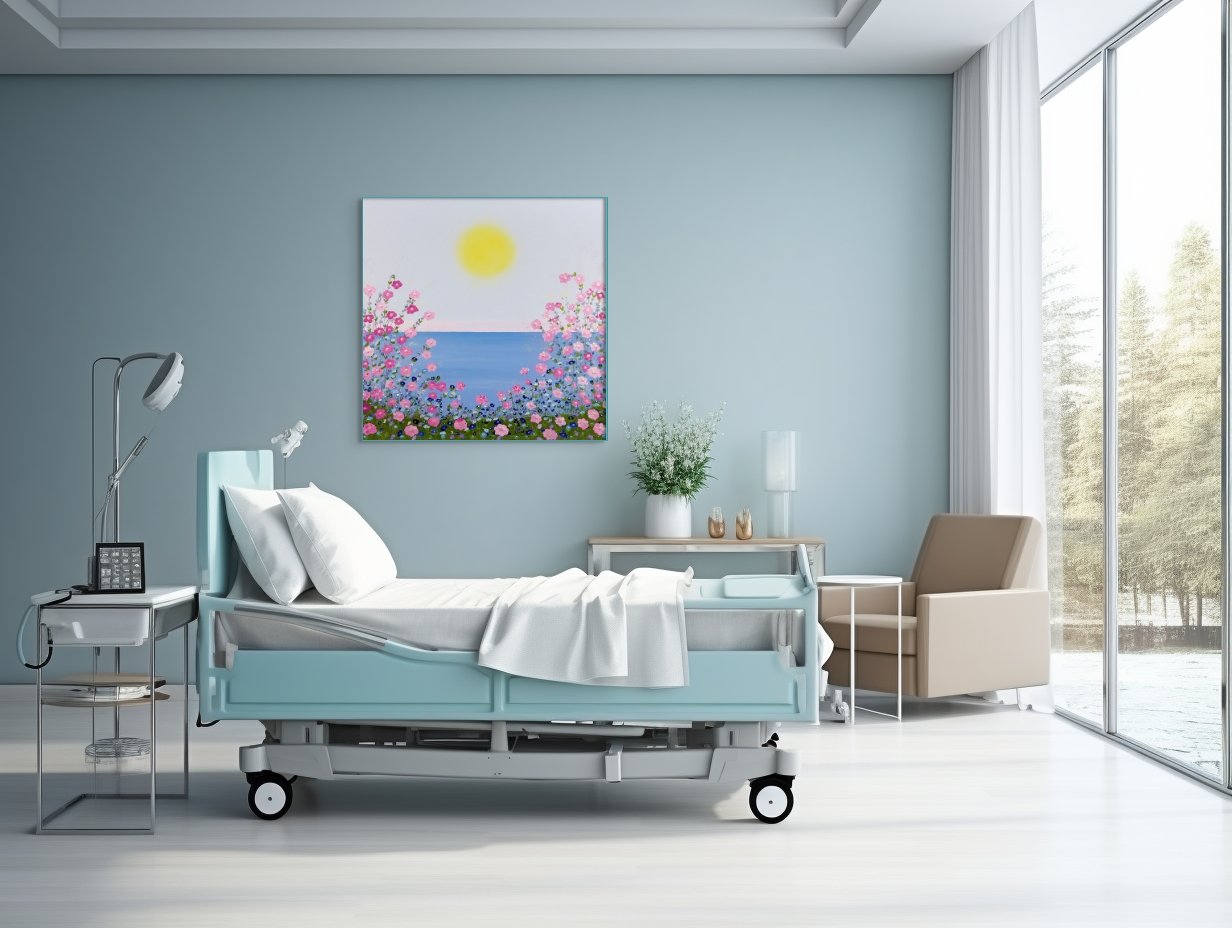
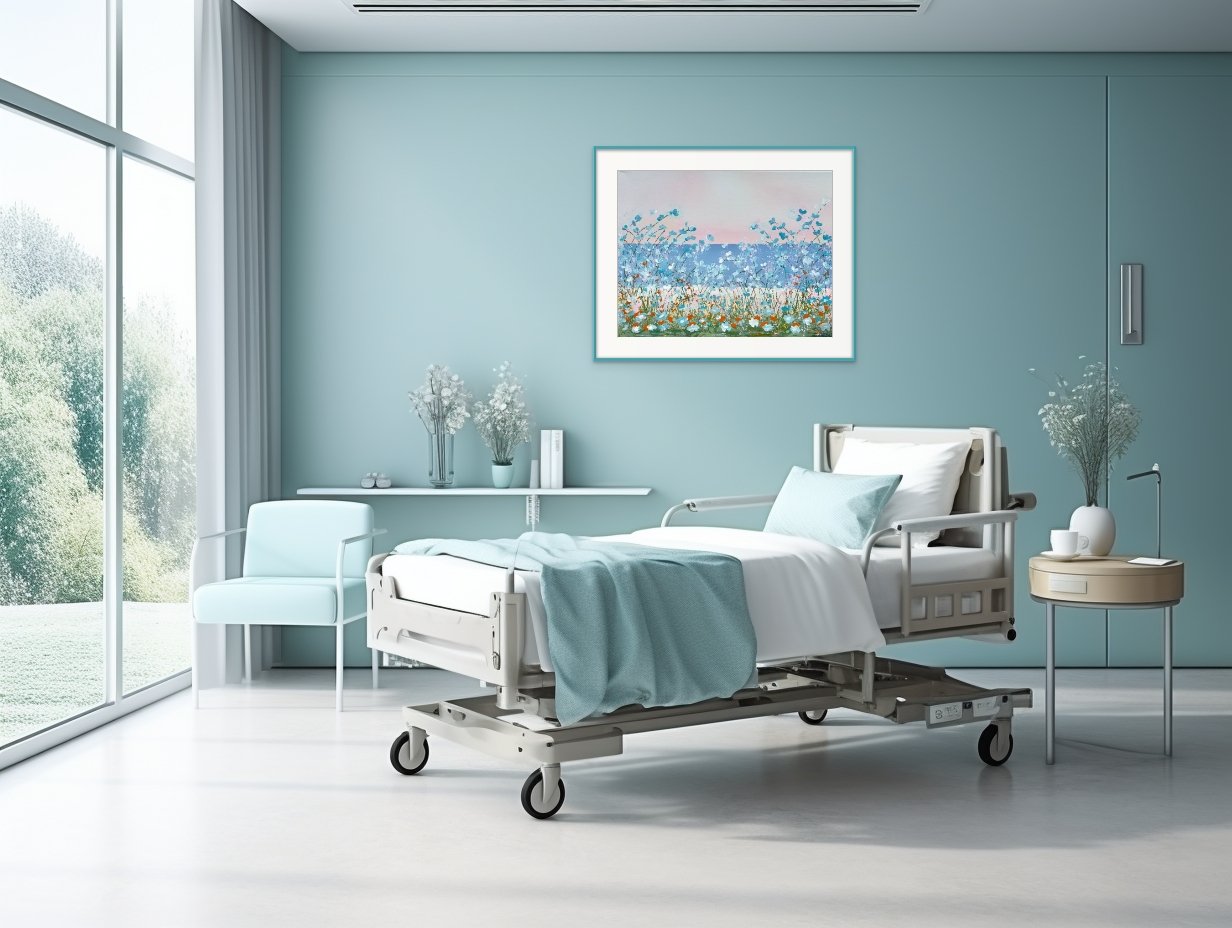
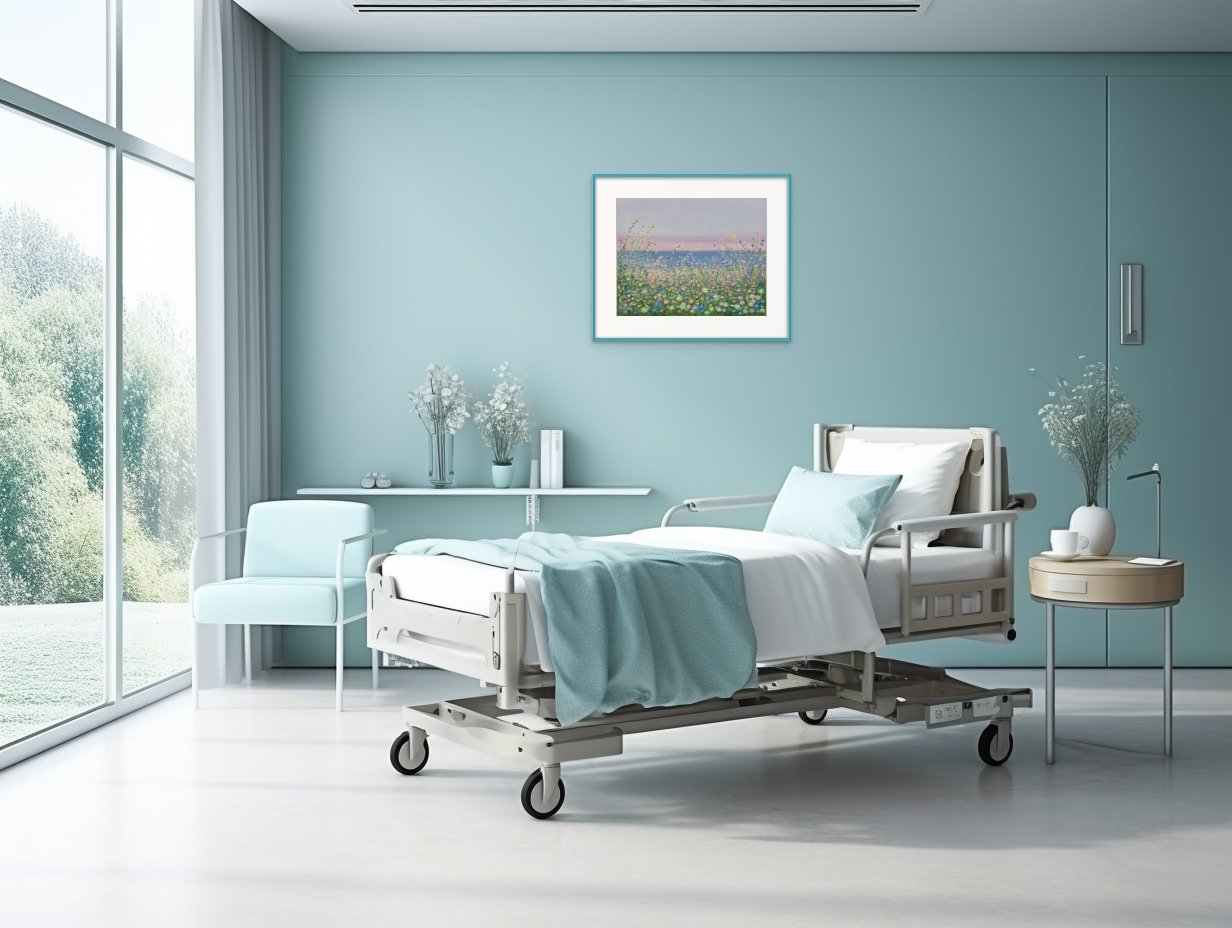
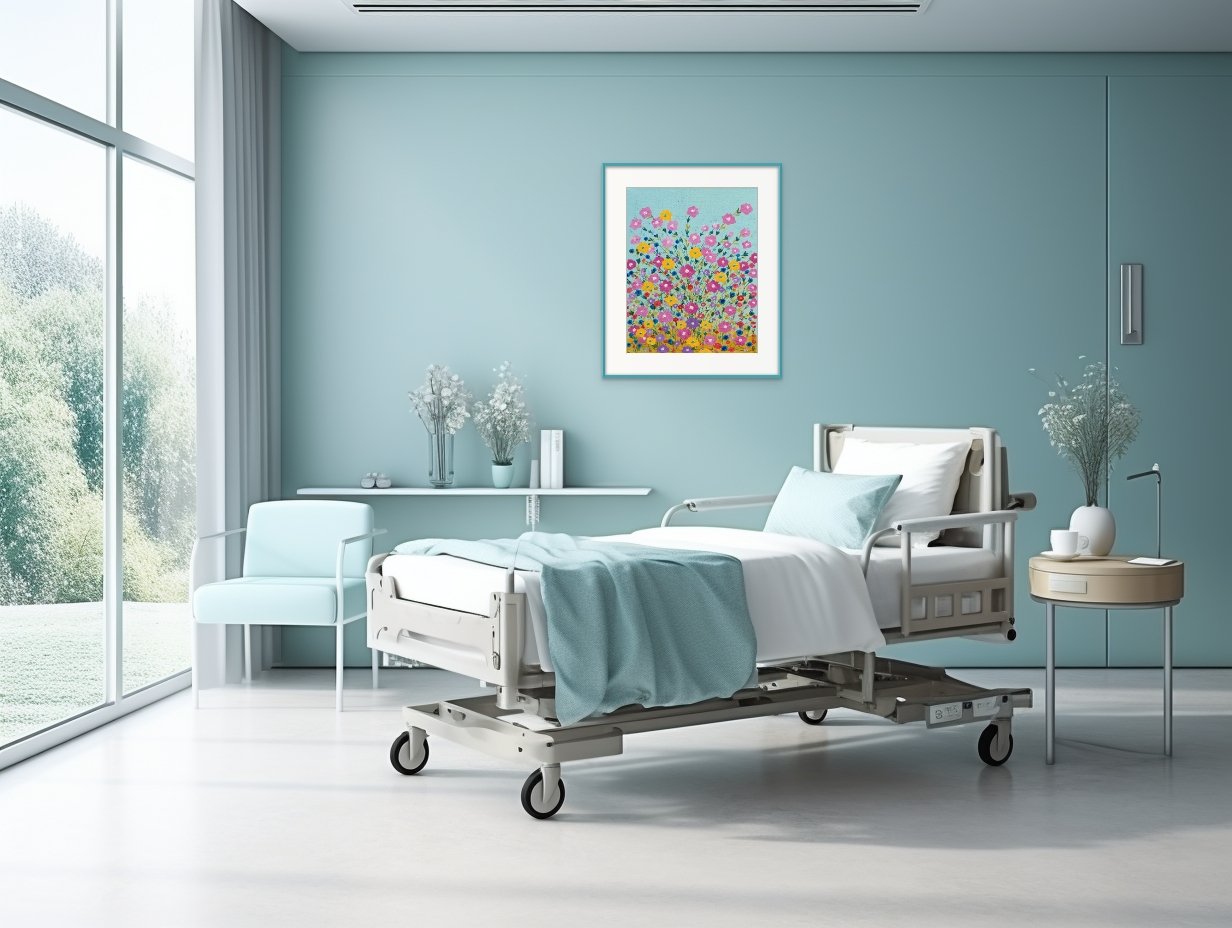
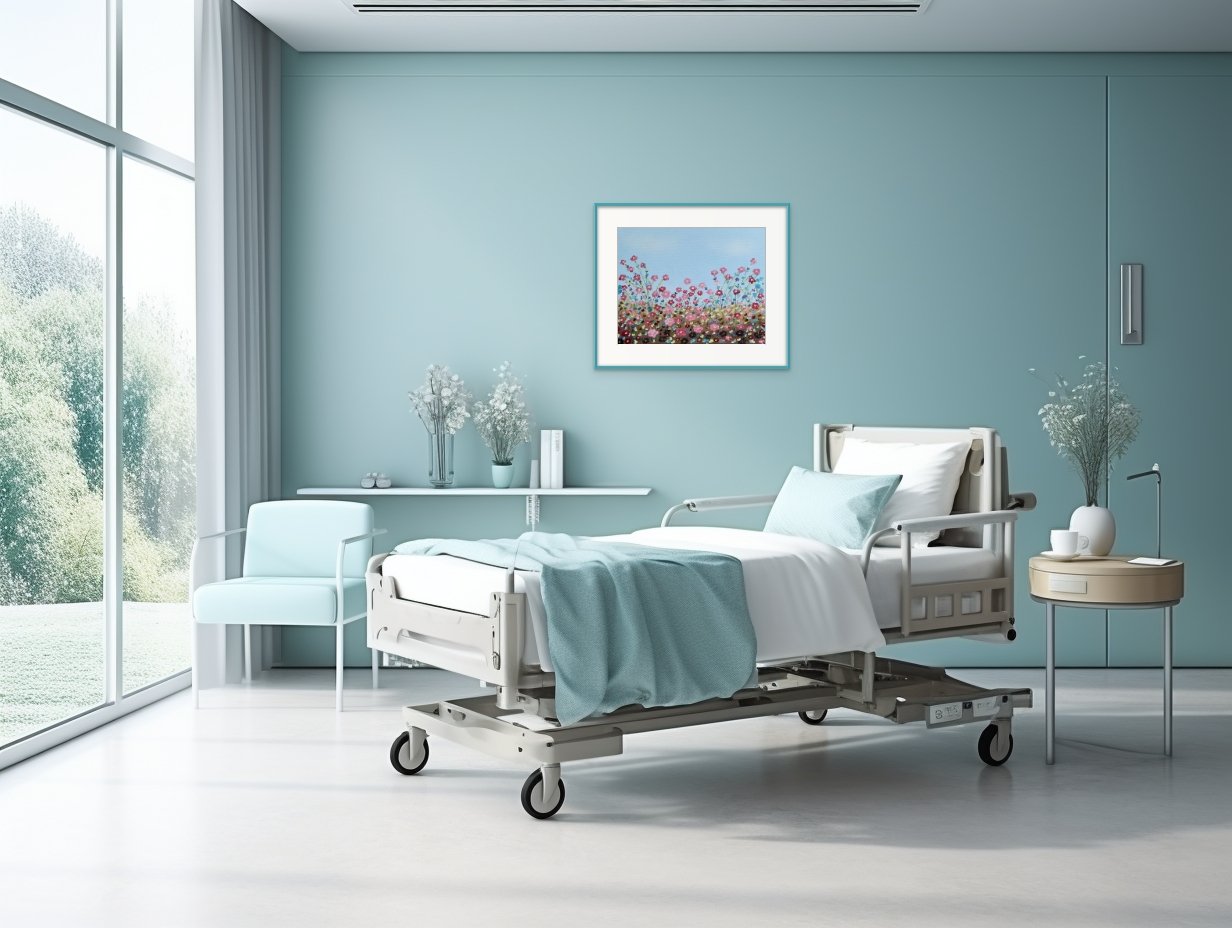
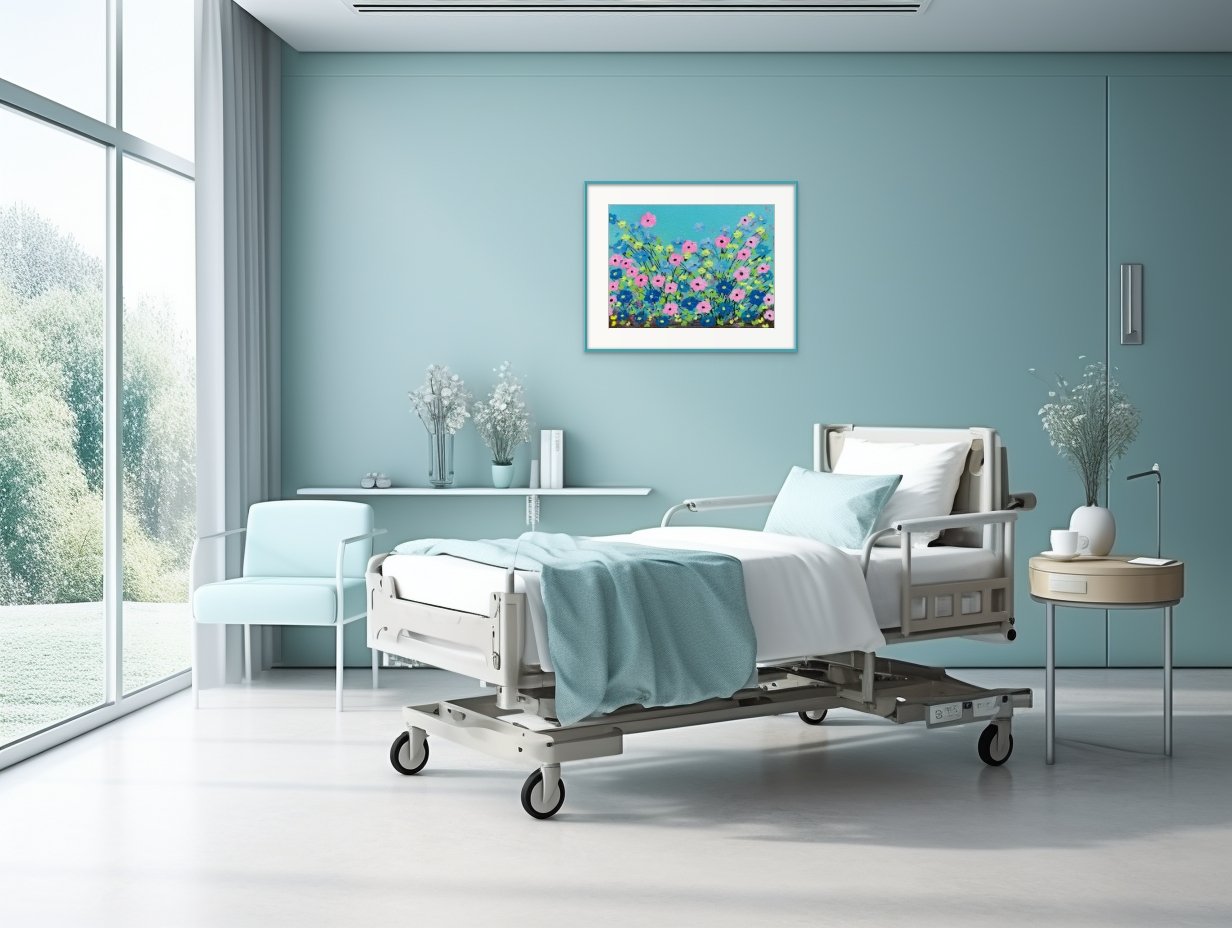
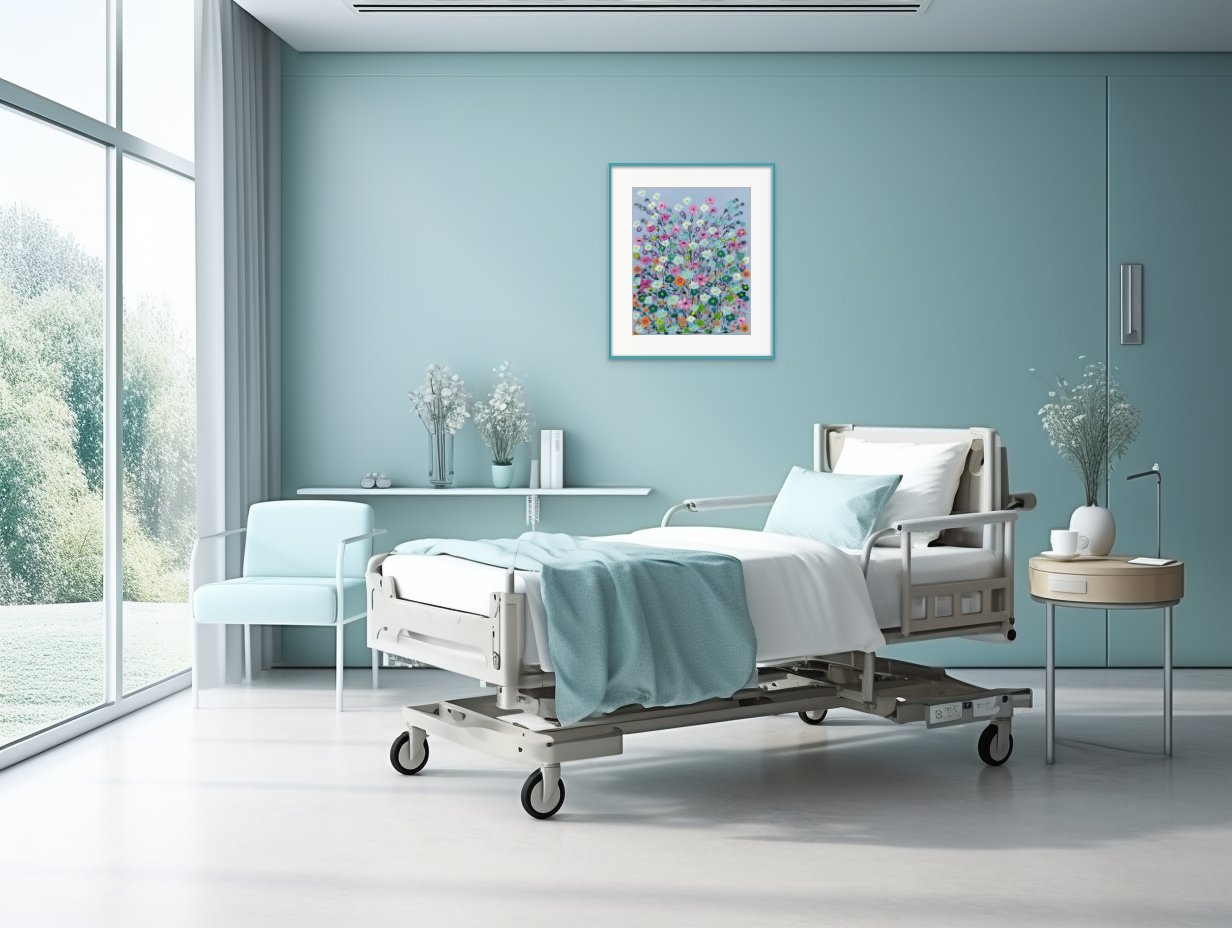
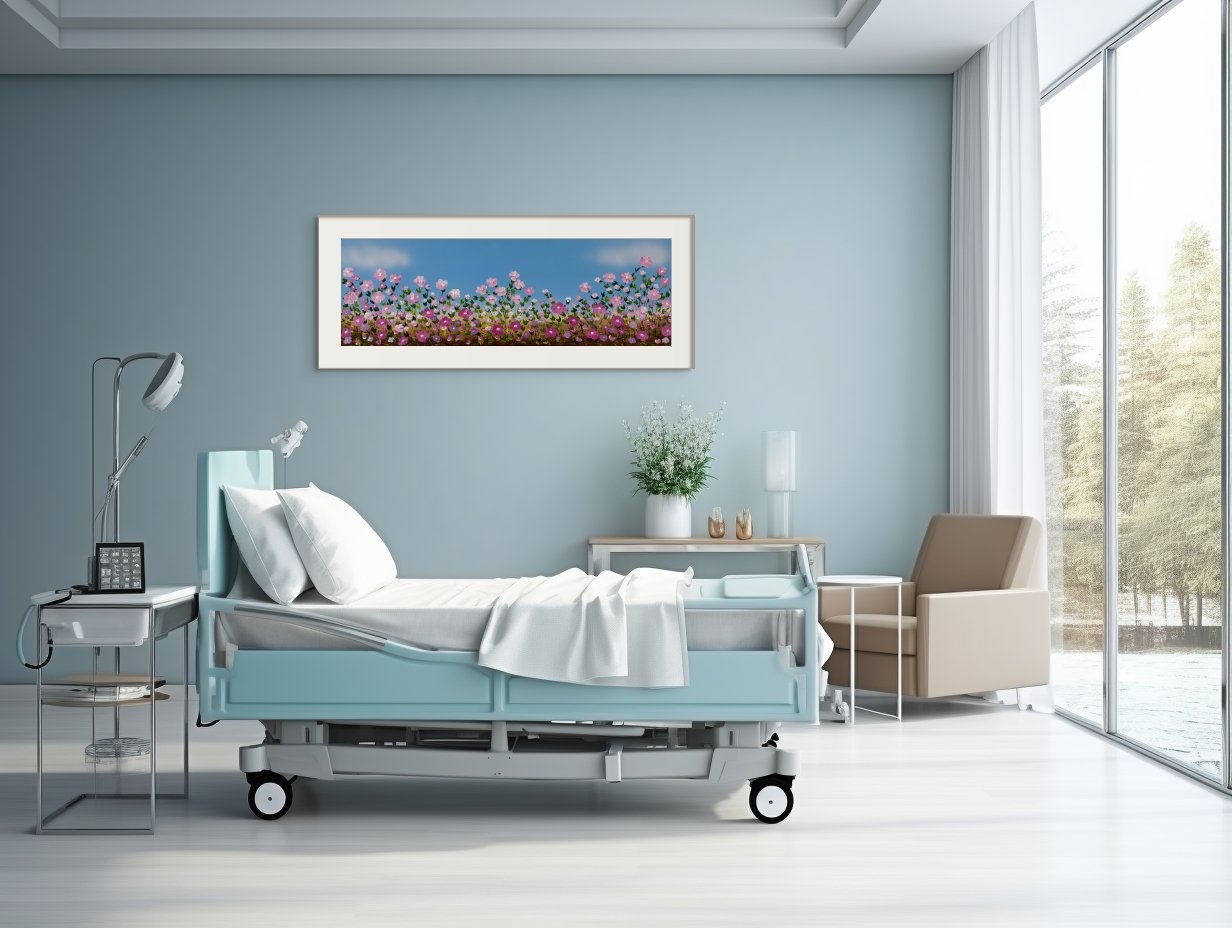
Did You Know This About Our Health And Art?
Did you know that some evidence-based designs and art are no longer categorized as just decorative? It’s the difference between designing for wall decoration to designing for health in a physical environment.
Did you know that some evidence-based designs and art are no longer categorized as just decorative?
Based on study after study, evidence-based designs and art have become part of the Environment Of Care.
“The Environment Of Care is the understanding that the experience someone has in a healthcare delivery system is a function of six components: physical environment, layout and operations systems, people, concept, and implementation.” (Integrating Evidence-Based Design, Practicing The Healthcare Design Process, The Center For Health Design)
Evidence-based designs are successful when they consider the entire Environment Of Care experience. It’s the difference between designing for just decoration (Wow! That color will look fabulous with this sofa!) to designing for health in a physical environment (Wow! That evidence-based design with those colors will look fabulous with this sofa AND they will benefit my health by meeting the guidelines of evidence-based design!).
A World Health Organization report, based on evidence from over 3,000 studies identified “prevention of illness” as a major role for the arts. What were some of the beneficial links between the arts and health?
The psychological benefits were enhanced self-efficacy, coping, and emotional regulation.
The physiological benefits included lower stress hormone responses, enhanced immune function, and higher cardiovascular reactivity.
The social benefits between arts and health showed reduced loneliness and isolation, enhanced social support, and improved social behaviors.
The behavioral benefits indication from these studies were increased exercise, an adoption of healthier behaviors, and skills development. (WHO, 2019 Report on Arts and Health)
Today, study after study shows benefit after benefit of evidence-based designs.
I am a member of The Society Of Experimental Artists and I like to experiment by taking credible scientific/medical study results and translating them into works of art. Although I have created quite a bit of art using the established evidence-based design principles and guidelines, not too much evidence-based design creation and analysis has been done with abstract art.
Here are some of my earliest experimentations into the world of evidence-based design and abstract art.
Mastering Life’s Complexities got sold to a gallery director the first day I had it on display at the gallery.
I love to donate art to raise money. Power And Gold I donated to a Crooked Tree Arts Center fundraising event in beautiful Bay Harbor, Michigan.
Power In Action is a painting I just love to have around. The colors are so deeply amazing and they move. I put it for sale on my website (https://thewonderfulworldofdorotheasandraart.com), but I haven’t turned it over to any gallery. I think I’m hoping it never sells. LOL!
With all three of these paintings, I was going after strong (at least by evidence-based design standards) POWER AND MOVEMENT WITHOUT CAUSING ANY STRESS.


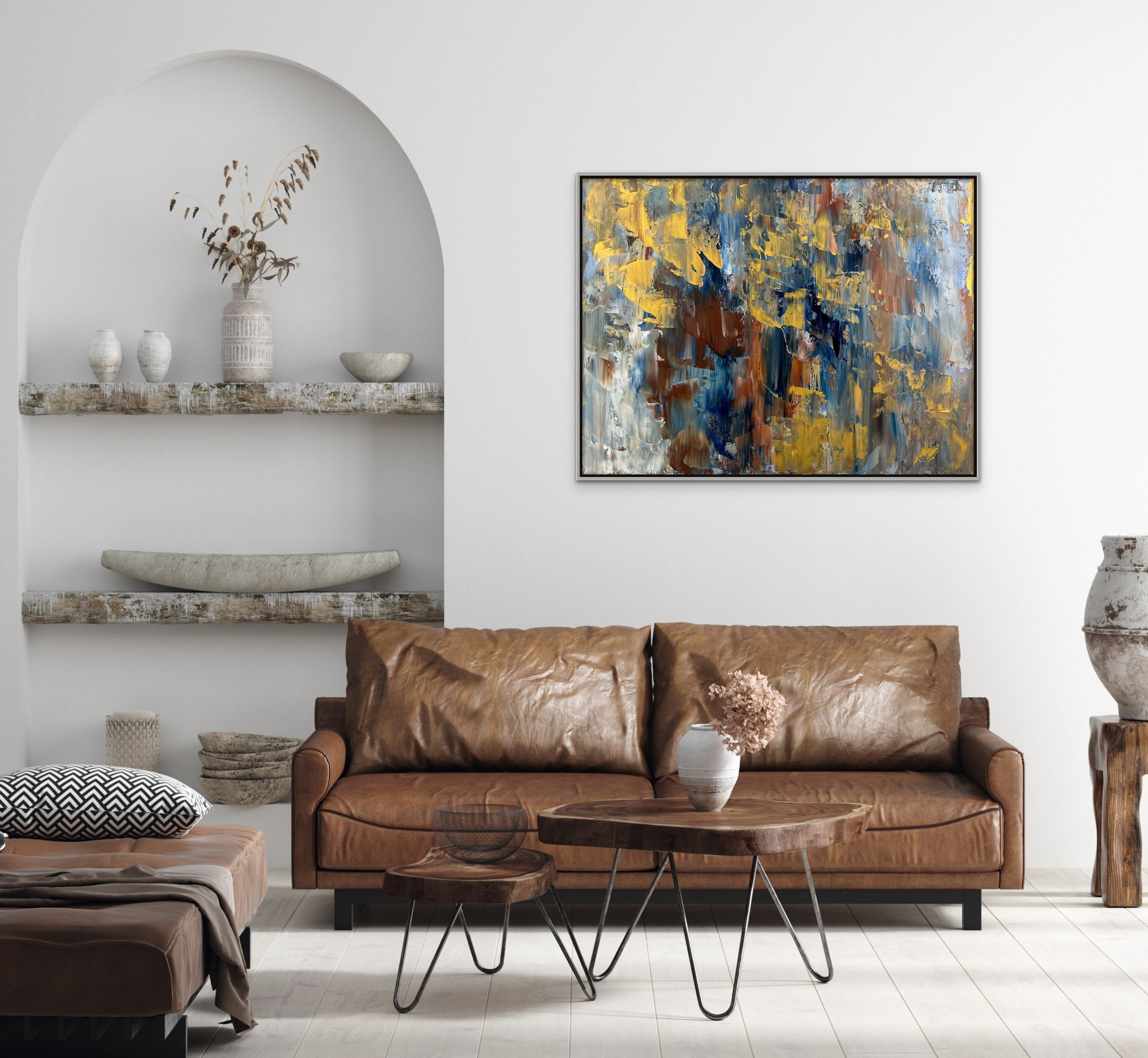
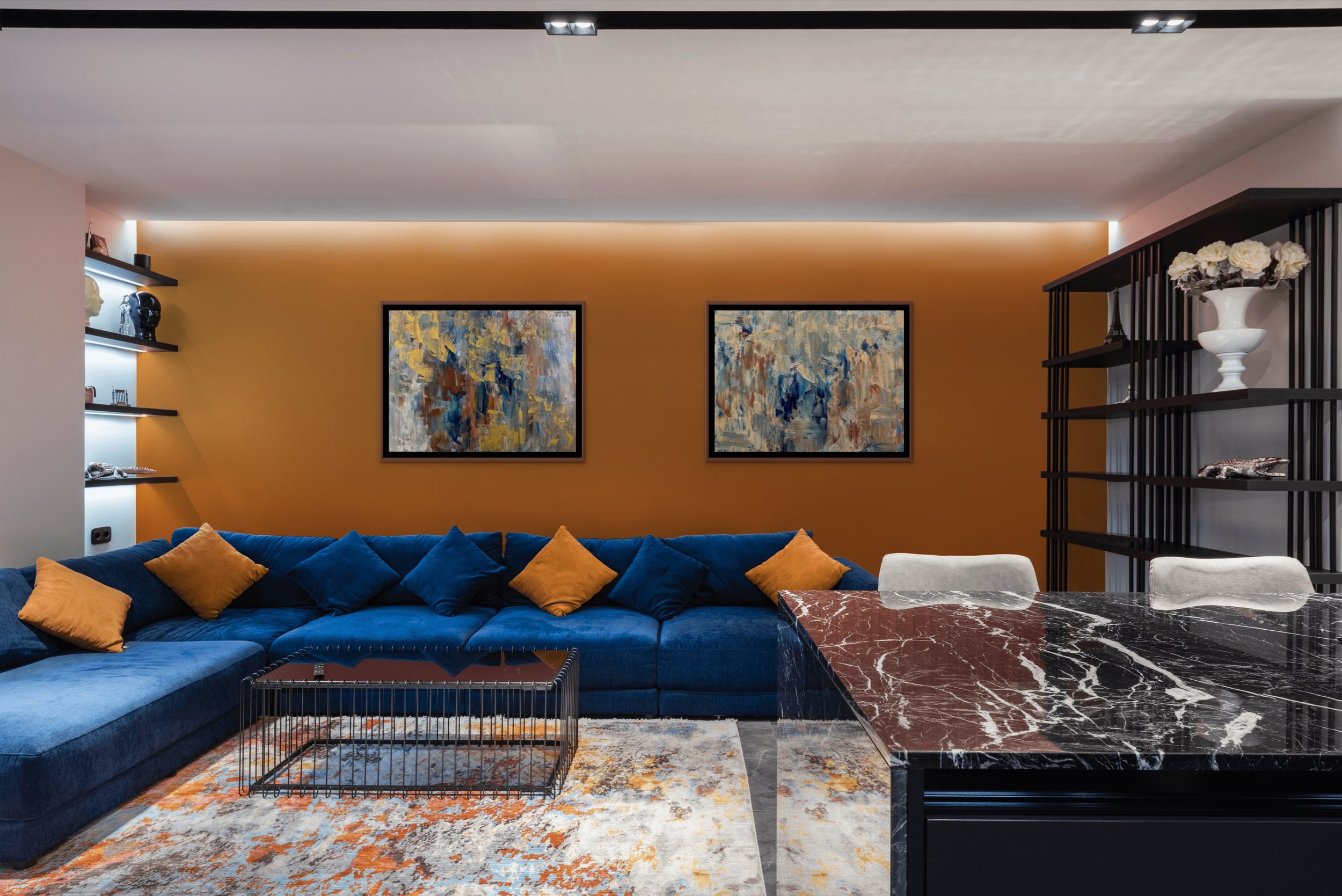

Take a peek inside my new book, 100 Days Of Happy Happy Art, Evidence-Based Design.
There’s even a chapter on neuroscience and art.
Did You Know This About The Brain And Art?
Did you know many scientists, researchers, and medical experts have been studying our brains and art?
Did you know many scientists, researchers, and medical experts have been studying our brains and art?
Their many credible studies have even resulted in creating actual guidelines for evidence-based designers and artists to follow while creating designs/art that positively impacts the human brain and emotions.
With landscapes, waterscapes, and garden scenes, one guideline is to have visual depth or openness in the immediate foreground. A reason for this is that the depth or openness creates an absence of a threat or ambiguity—two things many humans do not like or fear.
Another guideline based on credible scientific/medical studies is to offer designs with warmer seasons, verdant vegetation, and flowers in bloom. Something I like to add to my art—calm or non-turbulent waters are also well received by the human mind and emotions.
I like to experiment with evidence-based design, so in this 1:22 minute video on 21st century Great Lakes art, many of these paintings feature non-turbulent water along with lush vegetation and flowers in bloom. The video’s theme was today’s Great Lakes art, but many of the paintings were created using evidence-based design guidelines developed by scientists, researchers, and medical experts.
Here are some close-up views of sold paintings that were created using many evidence-based principles and guidelines. In addition to meeting the evidence-based design guidelines, I build into each painting artistic qualities that trigger our brains to create feelings of happiness and joy. I’m always asked to do commissions of these, and they usually sell not long after being put on display. One newspaper writer referred to me an artist of happiness and hope. I believe it is because I translate very credible scientific/medical study results into works of art.
When I paint, my goal is not to reflect beauty in nature. My goal goes much deeper. It is to use the art to trigger the brain to create feelings of happiness.


















































